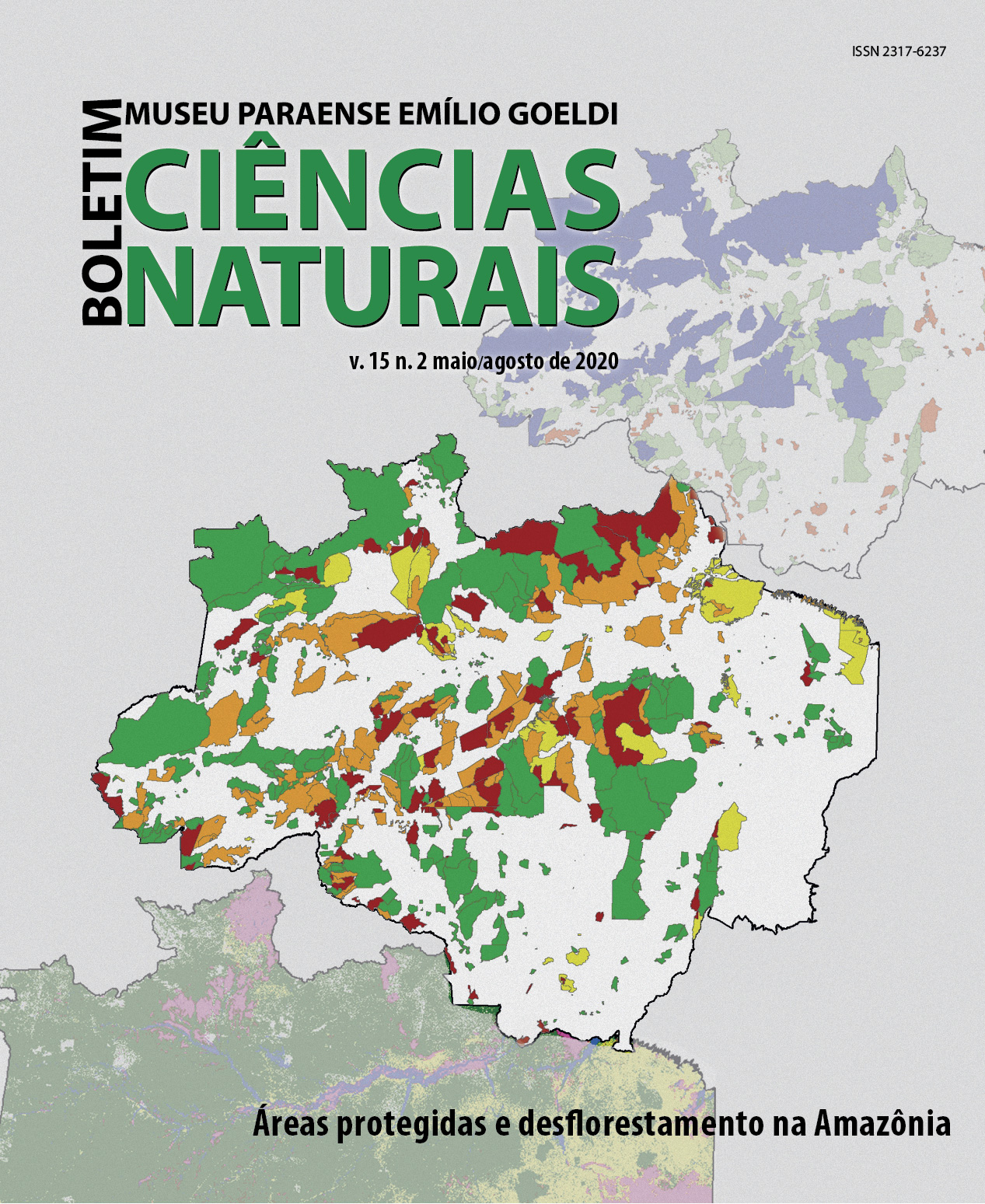Comparative study of the fauna of commensals in the nests of three large species of Brazilian ants (Hymenoptera: Formicidae)
DOI:
https://doi.org/10.46357/bcnaturais.v15i2.303Keywords:
Dinoponera gigantea. Dinoponera lucida. Paraponera clavata. Interspecific relationships. Nidification.Abstract
The internal environment of an ant nest maintains homeostatic conditions that facilitate the survival of other animals, notwithstanding the colony being a complex place with a well-structured defense system. Therefore, ant nests are suitable for the survival and reproduction of numerous organisms that use the nest as a shelter only or feed on the ant’s refuse. Substrates of nests of Dinoponera lucida, Dinoponera gigantea (Ponerinae) and Paraponera clavata (Paraponerinae) were collected at Belmonte, state of Bahia, and Caxias, state of Maranhão, Brazil. Three nests of D. lucida, four of D. gigantea and a single one of P. clavata were sampled. The larger specimens were directly collected from the substrate and were then placed in Berlese funnels for seven days in order to extract the mesofauna. Our data showed that there is a higher diversity of invertebrates associated with the P. clavata nest than with the D. lucida and D. gigantea nests, probably because it has a larger volume and offers a greater diversity of breeding and nesting sites for small invertebrate species. In addition, the population of P. clavata is considerably larger than of Dinoponera, which increases the likelihood of interactions within the colonies.
Downloads
Published
Issue
Section
License
Publication means fully assigning and transferring all copyrights of the manuscript to the journal. The Liability Statement and
Assignment of Copyrights will be enclosed with the notice of acceptance. All the authors must sign the document and return it to the journal.








